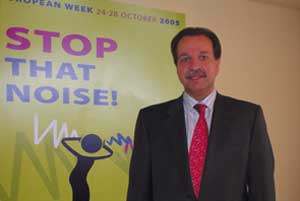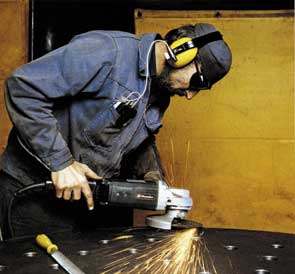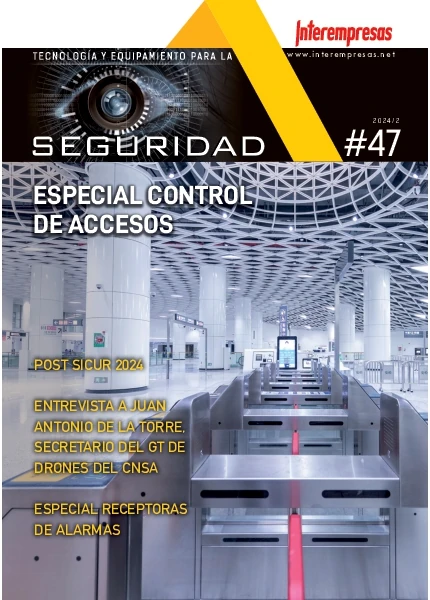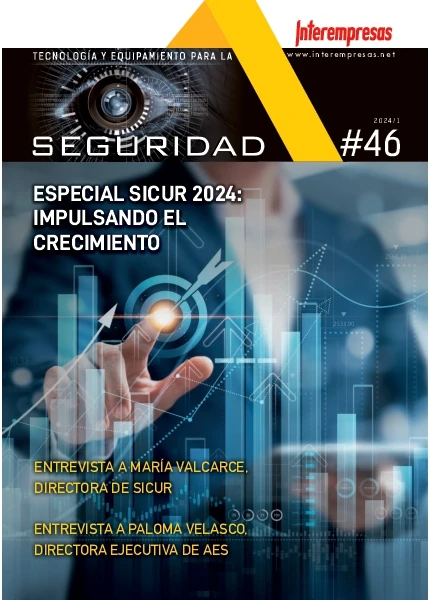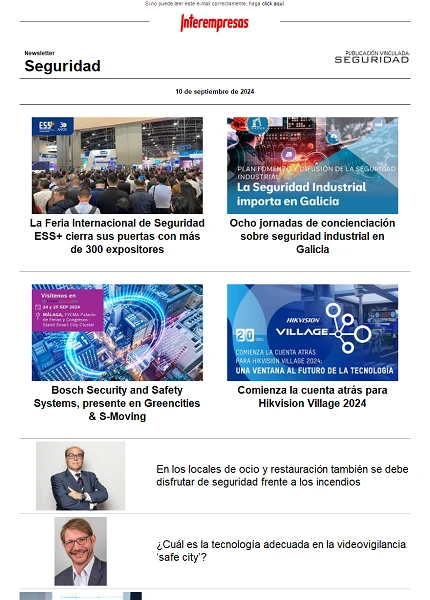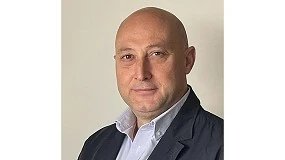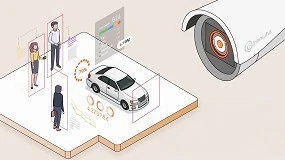Interview with Hans-Horst Konkolewsky, Director of the European Agency for safety and health at work (AESS), the noise at work and its effects
The noise at work can cause anything other than hearing loss
The noise is often considered as a lesser evil. It is intangible, does not cause us an immediate and visible effect and, therefore, we tend to not give the necessary importance to the harm that can cause human beings. The European week against noise was held from 24 to 28 October, with hundreds of awareness throughout Europe. And on 12 December it took place in Bilbao the European noise at work Summit, a good time to interview Hans-Horst Konkolewsky, Director of the European Agency for safety and health at work, who reveals that us is a factor that we despise. The Agency was created by the European Union to meet the needs of information in the field of safety and health at work. The AESS is based in Bilbao, and aims to improve the lives of workers in the workplace, promoting the exchange of technical, scientific and economic information between all those involved in issues related to the safety and health at work.
The European Agency has developed a campaign across Europe on exposure to noise at work. Is noise really topical today, when most of the people working in places relatively little noisy?
When we talk about noise at work, the first image that comes to mind are the shipyards, construction or other traditional workplaces. But in reality, most of us are surrounded by noise in our places of work. The same that it comes from machines or others: the noise can damage our health.
What are groups at risk, then?
The noise can be a problem in virtually all work environments: from factories to farms through the concert halls or construction sites. I will give you some examples: noise is a pressing problem in the education sector. According to a Danish study, more than half of the teachers and staff working in children's schools must speak in a very high tone of voice in many industries in order to communicate with their peers. Also the people who work in bars, clubs and local night, such as waiters, musicians or DJs, are a potential risk. But not only them, truckers, people working in booths and calls centres (the so-called call centers) and even those who work in open offices can also be exposed to noise.
How many people are affected by this problem in Europe?
It is estimated that one third of European workers (more than 60 million people) are exposed to noise pollution during more than a quarter of their working time. And nearly 40 million people (equivalent to the entire population of Spain) during at least half of their working hours. The loss of hearing as a result of the noise remains one of the most common occupational diseases in Europe, and is the cause of about one-third of work-related diseases. And let's not forget also its high economic costs: at an annual cost amounting to 160 million euros, the noise is, according to a German study, the second most important cause (after silicosis) of expenditure on pensions for disability and rehabilitation.
Also, noise increases the risk of accidents because, with a few levels high noise, the worker is more difficult to hear and communicate
What you mean exactly by "noise"? How can you know if the noise that is exposed can get to be dangerous?
The risk of damage caused by noise not only has to do with the acoustic level but also with the duration of exposure to the noise. The frequency (both a high tone and a low tone) can also be a factor, as well as the type of noise (for example, if it's a noise impact or otherwise). A simple test is to ask how long is it necessary to raise our voices to communicate with the colleagues we have around. As a general rule, we can say that higher is the level of noise and longer is exposed, the greater the probability of loss of hearing ability. But the noise also has other effects on health.
Then, do are we not talking about only remain deaf?
No, no, the noise at work can cost us more than hearing. There is evidence to show that the noise exposure affects the cardiovascular system, resulting in a release of adrenaline which, in turn, is associated with the stress and tension increased. This means that the noise at work, even at very low levels, may be a causative factor in work-related stress.
Also, noise increases the risk of accidents because, with a few levels high noise, the worker is more difficult to hear and communicate. Noise can also interact with dangerous chemical substances and to increase its effect on our health. And it can also be dangerous for pregnant women!
I have the impression that we cannot do much against the noise in the work, am I wrong? Not is it an inherent to some types of work item?
In fact it's a widespread false belief and there are even many people who think that the noise is an evil that one has to learn to live and work. And yet there are legal provisions to protect workers against the risks of noise at work. The new EU directive on noise, who must transpose in all Member States by February 2006, emphasizes prevention and prescribes that, wherever possible, the noise at source will be deleted. There are practical solutions that can help us reach this goal. We can effectively protect workers against the risks of noise at work.
We have launched a campaign which was held simultaneously in 31 countries and which was officially launched on 20 April, international day of awareness against noise
Are doing, for example, using hearing protectors?
At all! Equipment for personal protection, such as earplugs or earmuffs, is only a last resort. First of all, the employer should be first a risk assessment for, based on the results, take appropriate measures. Among them, wherever possible, the Elimination of the causes of the noise, greater control of the levels of noise or reducing the exposure of workers changing so the Organization of the work and the design of the post. In a French company of food processing, for example, the workers were exposed to a very loud noise produced by the constant recipients clash to be transported on a tape. With a coating of the conveyor and the adjustment of its speed was reduced noise levels in which the use of protective earplugs was no longer necessary. As a general rule, the most effective method for noise control is to limit the entry to the workplace of noisy equipment, through an effective policy of acquisition and purchase, planning the design of the workplace or the improvement of its acoustics. In call centres, for example, the background noise makes that operators will have to raise our voices which, in turn, increases the overall noise level. In one of these centres, the problem was solved changing the room layout and improving the acoustics. These examples show that the noise management is possible and that it does not necessarily have to be expensive.
What are the plans that have the Agency to raise awareness against noise at work?
We have launched a campaign which was held simultaneously in 31 countries and which was officially launched on 20 April, international day of awareness against noise. As it has done in previous editions of the European week for safety and health at work, the Agency has been issued several publications on the prevention of noise and devotes a section of your web page to this topic. As part of this campaign been drafted a letter on-line's commitment to the campaign, to encourage enterprises, organizations, institutions, political social and responsible actors to participate and are committed to promoting awareness and prevention against noise. Also a new edition of the contest of the good practice awards in relation to the prevention of exposure to noise has culminated in the work.
